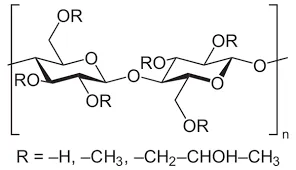
Aug . 12, 2024 21:46 Back to list
Exploring the Applications and Benefits of Methyl Hydroxyethyl Cellulose in Modern Industries
The Versatility of Methyl Hydroxyethyl Cellulose in Various Industries
Methyl hydroxyethyl cellulose (MHEC) is a derivative of cellulose, a natural polymer that is widely used due to its unique properties. The chemical structure of MHEC includes both methyl and hydroxyethyl groups, which enhance its solubility in water and increase its effectiveness in various applications. The versatility of MHEC makes it a key ingredient in a range of industries, including pharmaceuticals, food, cosmetics, and construction.
The Versatility of Methyl Hydroxyethyl Cellulose in Various Industries
In the food industry, MHEC is recognized for its thickening and stabilizing properties. It is commonly used in products like sauces, dressings, and dairy items to enhance texture and mouthfeel. By modifying the viscosity of food products, MHEC helps improve their stability and shelf life. Furthermore, as it is non-toxic and derived from natural sources, it is considered safe for consumption. This makes MHEC an appealing option for formulating clean-label products, which are increasingly in demand among health-conscious consumers.
methyl hydroxyethyl cellulose

The cosmetic industry also benefits significantly from MHEC's properties. It is widely used in creams, lotions, and gels as a thickening agent, stabilizer, and emulsifier. MHEC helps improve the application and spreadability of cosmetic formulations, providing a smooth texture that enhances user experience. Moreover, its moisture-retaining properties aid in providing hydration to the skin, making it an essential ingredient in many skincare products. Given the growing trend of incorporating natural ingredients into cosmetics, MHEC serves as an attractive alternative to synthetic thickeners.
In construction, MHEC finds its utility as an additive in cement and mortar formulations. Its water-retention properties prevent premature drying of these mixtures, allowing for better adhesion and workability. By enhancing the performance of construction materials, MHEC contributes to the durability and quality of finished structures. Additionally, the use of MHEC in this sector supports the development of eco-friendly building materials, as it is derived from renewable resources.
Despite its wide array of applications, the production and use of MHEC raise some environmental concerns. As with many synthetic chemicals, ensuring the sustainability of sourcing and production processes is critical. Many manufacturers are now exploring greener methodologies to produce MHEC, aiming to minimize environmental impacts while meeting the growing demand for this versatile compound.
Overall, methyl hydroxyethyl cellulose stands out as a multifunctional agent that plays a crucial role across various industries. Its ability to modify viscosity, stabilize formulations, and retain moisture makes it an invaluable component in pharmaceuticals, food, cosmetics, and construction. As the market continues to evolve, particularly with the increasing focus on sustainability, MHEC’s applications are likely to expand even further, cementing its position as a key ingredient in both conventional and innovative products. In a world that increasingly prioritizes quality and sustainability, MHEC is poised to remain relevant and essential across numerous fields.
-
Unlocking the Benefits of HPMC Products: A Gateway to Versatile Applications
NewsAug.07,2025
-
Unleashing the Potential of HPMC Ashland: A Comprehensive Look
NewsAug.07,2025
-
Tile Bonding Cellulose: The Key to Superior Adhesion and Durability
NewsAug.07,2025
-
Hydroxypropyl Methylcellulose Powder: The Versatile Component in Modern Pharmaceuticals
NewsAug.07,2025
-
Hydroxyethyl Cellulose: The Versatile Solution for Various Industries
NewsAug.07,2025
-
Hydroxyethyl Cellulose (HEC): The Versatile Polymer for Various Applications
NewsAug.07,2025







